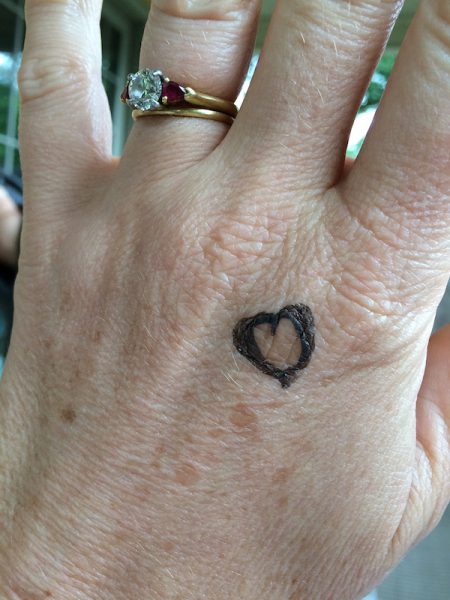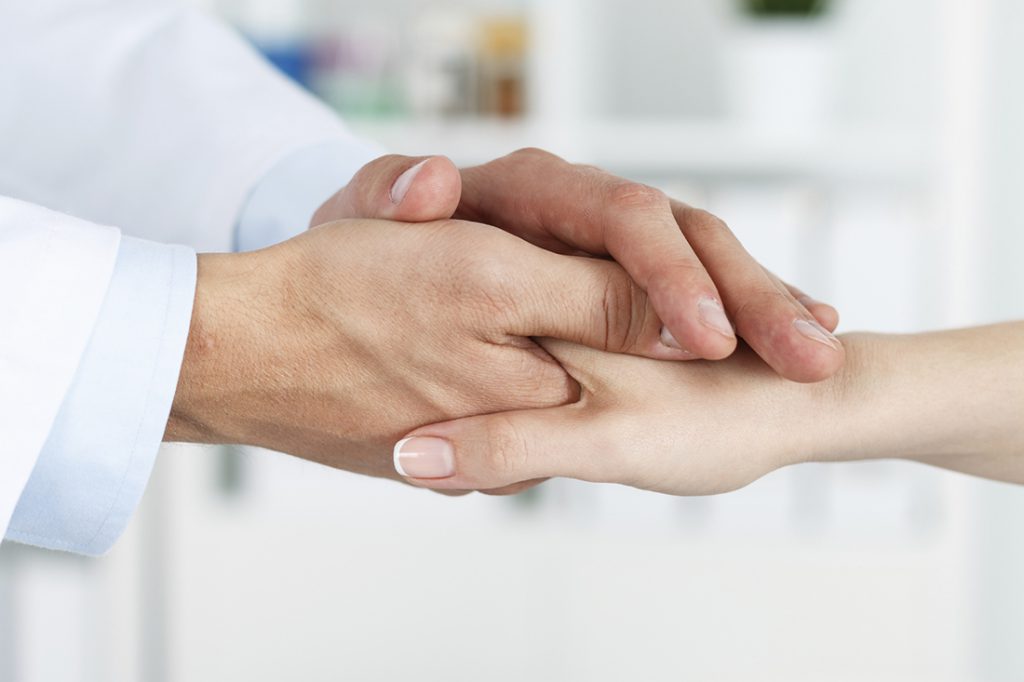When my friend Renee posted this photo of her hand on Facebook (below), it struck a nerve. She had drawn a heart around a large brown spot and wrote: “Instead of recoiling from my age spots, I will now encircle them with love. Please join me.”

Another chimed in with a frowny face: “Yep, sun damage can also equal skin cancer.” That spurred a lot of conversation and questions.
I asked New York City dermatologist Julie Karen, MD, also a member of The Skin Cancer Foundation, to give us a hand on our hand queries.
What do you notice most about women’s hands?
Dr. Karen: I often see a mismatch between the hands and face. Your hands are chronically exposed to the elements and to the sun. So is your face, but women tend to take better care of their faces and apply sunscreen more diligently. Plus, we wash our hands all day long and seldom reapply sunscreen to hands. I can usually tell a woman’s real age by looking at her hands.
What’s happening to our hands?
Dr. Karen: With sun exposure and over time, you get thinning of the skin. You lose collagen and elasticity. The fat under your skin diminishes. That makes the blood vessels more prominent, so you get that veiny, even skeletal appearance. And then, of course, there are the sun spots. That sun damage can lead to skin cancers, which are common on the hands. In fact, 90 percent of skin cancers and 90 percent of skin changes that we associate with aging (wrinkles, brown spots and textural changes) are attributable to damaging effects of the sun.
How can we protect our hands better?
Dr. Karen: You need to reapply sunscreen on your hands more often than anywhere else. Yes, it’s really hard to remember. So keep some by the door, and carry a small tube of sunscreen in your bag or a lightweight sunscreen stick in your pocket for reapplying on your hands throughout the day. Just make it a habit.
If you’re going to be outside for hours, wear a sun shirt with long sleeves and the thumb hole, which extends the sleeve to cover much of your hand. Many of the new UPF (ultraviolet protection factor) fabrics breathe, and they really work. And hear me out: Consider a parasol, which will keep your hands in the shade. It’s great for sitting in the bleachers at your kids’ baseball or soccer games.
Anything we can do to improve our hands?
Dr. Karen: You can reverse some of the damage. You can use an antioxidant serum on your hands. To boost collagen production, you can apply a topical retinoid on your hands, just as you do on your face. Creams with DNA repair enzymes can help prevent early precancerous skin changes. And of course, continue to protect diligently with sunscreen.
Beyond these measures, there are laser treatments that can boost collagen, such as nonablative fractional resurfacing lasers. We can inject fillers to replenish the loss of volume beneath the skin’s surface. Sometimes we inject the dilated veins with sclerotherapy to diminish their appearance. Q-switched lasers, the type used to remove tattoos, can be very effective in eradicating brown spots. Of course, these treatments can be expensive, but they can take years off your hands, if that’s your goal.




